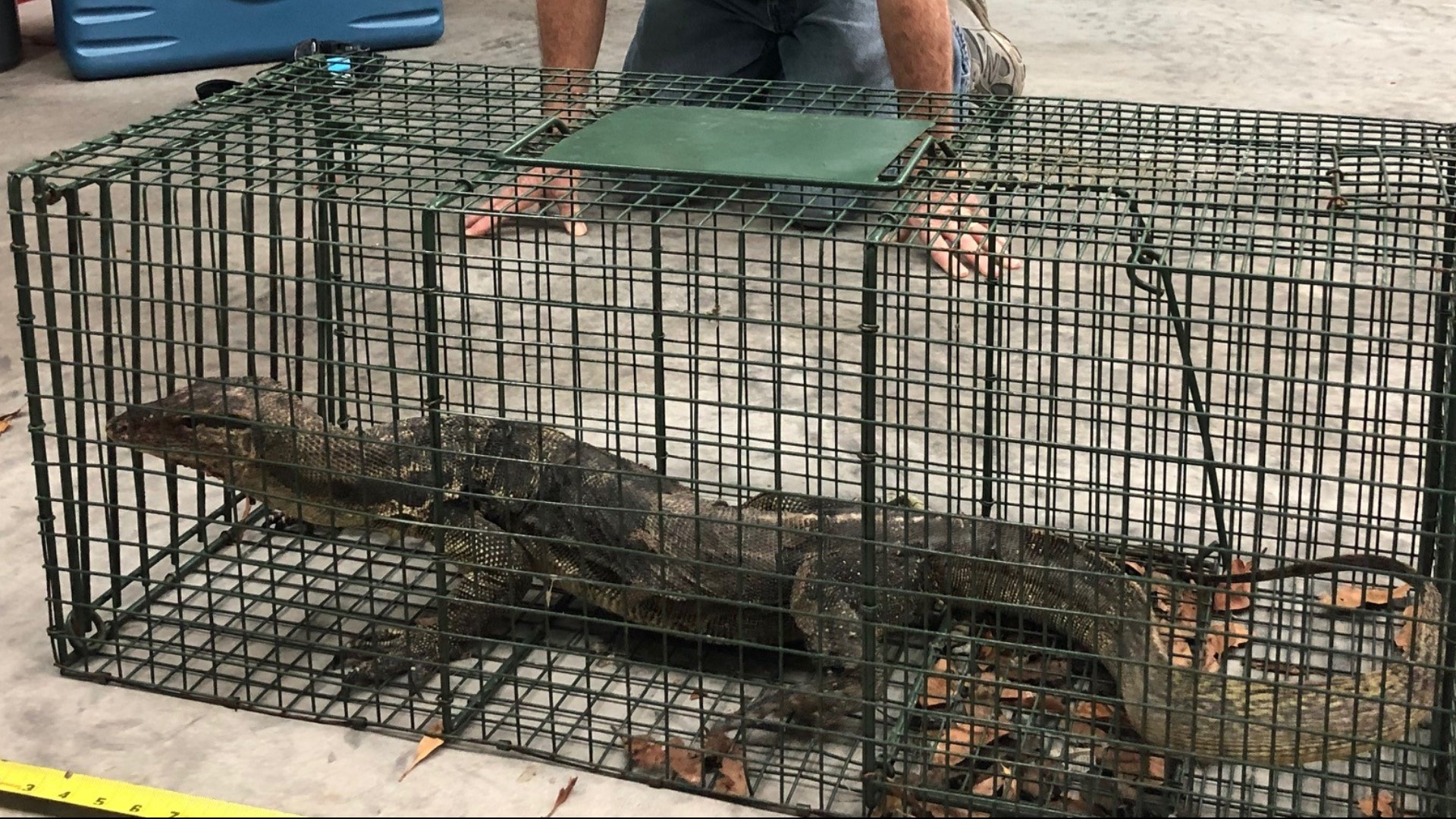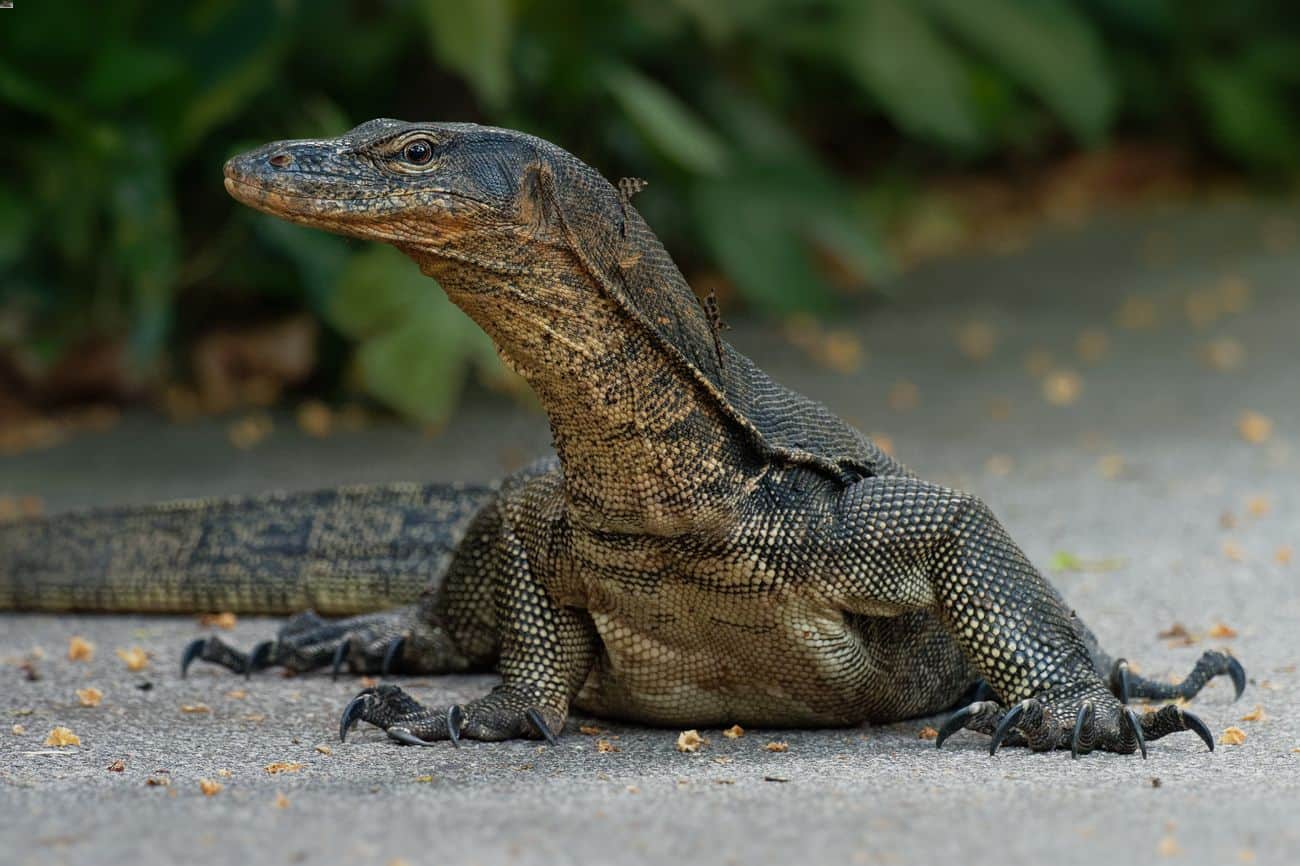Asian Water Monitor Habitat in Florida

Asian water monitors in Florida have established populations in various natural habitats, primarily wetlands and riparian ecosystems. They are commonly found in freshwater habitats such as swamps, marshes, rivers, canals, and lakes. These areas provide ample food sources and suitable shelter options for the monitors.
The specific environmental conditions preferred by Asian water monitors include warm temperatures, abundant vegetation, and access to water. They are ectothermic, meaning they rely on external heat sources to regulate their body temperature. Therefore, they often bask in the sun on rocks, logs, or vegetation to absorb heat. The dense vegetation in their habitats offers cover and protection from predators and the elements.
Shelter Preferences and Nesting Behaviors
Asian water monitors are semi-arboreal, meaning they spend time both in trees and on the ground. They often seek shelter in burrows, hollow logs, or dense vegetation. These shelters provide protection from predators, extreme weather conditions, and temperature fluctuations.
Female Asian water monitors typically lay their eggs in burrows or other sheltered locations. The nests are usually constructed in moist soil or sand and can contain up to 20 eggs. The eggs are incubated for several months before hatching.
Impact of Asian Water Monitors on Florida’s Ecosystem
Asian water monitor florida – The introduction of Asian water monitors to Florida has had a significant impact on the state’s ecosystem. These invasive predators compete with native species for food and resources, leading to population declines and habitat displacement. Additionally, they can carry and transmit diseases and parasites, further threatening native wildlife.
Competition for Food and Resources
Asian water monitors are opportunistic predators that consume a wide range of prey, including fish, reptiles, birds, and small mammals. This puts them in direct competition with native predators such as alligators, crocodiles, and otters. As Asian water monitors establish themselves in new areas, they may reduce the availability of food for these native species, leading to population declines.
Predation and Habitat Displacement, Asian water monitor florida
Asian water monitors have also been observed preying on native wildlife, including endangered species such as the Florida scrub jay and the gopher tortoise. Their large size and aggressive nature allow them to dominate nesting sites and other important habitats, displacing native species and reducing their reproductive success.
Disease and Parasite Transmission
Asian water monitors can carry and transmit a variety of diseases and parasites, including Salmonella and the parasitic fluke Ribeiroia ondatrae. These pathogens can infect native wildlife, potentially leading to illness and death. The introduction of new diseases and parasites can also disrupt the delicate balance of Florida’s ecosystem.
Management and Control of Asian Water Monitors in Florida: Asian Water Monitor Florida

In Florida, the management and control of Asian water monitors is a complex issue with ethical and legal implications. Several strategies are currently employed to manage their populations, with varying degrees of effectiveness.
One common approach is trapping and removal. This involves setting traps in areas where water monitors are known to frequent. Trapped animals are then euthanized or relocated to more suitable habitats. However, trapping and removal can be labor-intensive and expensive, and it is not always effective in reducing populations over the long term.
Ethical Considerations
The management of invasive species, including Asian water monitors, raises ethical concerns. Some people argue that it is cruel and inhumane to kill these animals, even if they are a threat to native ecosystems. Others believe that it is necessary to control their populations to protect native species and habitats.
In Florida, the ethical concerns surrounding the management of Asian water monitors are reflected in the state’s regulations. It is illegal to release non-native species into the wild, and it is also illegal to kill or harass native wildlife without a permit.
Legal Considerations
In addition to ethical considerations, there are also legal considerations surrounding the management of Asian water monitors in Florida. The state has a number of laws in place to protect native wildlife and habitats, and these laws must be taken into account when developing management strategies.
One of the most important laws is the Endangered Species Act, which protects threatened and endangered species. Asian water monitors are not currently listed as threatened or endangered in Florida, but they could be in the future if their populations continue to grow.
While the Asian water monitor in Florida has become a topic of concern, it’s worth noting the recent news that has also caught the attention of many: why JLo cancelled her tour. The reasons behind her decision have sparked curiosity and speculation.
However, returning to the issue of the Asian water monitor in Florida, it’s crucial to stay informed and take necessary precautions to protect both humans and the ecosystem.
While the Asian water monitor in Florida has sparked concerns, the recent cancellation of J.Lo’s tour due to unforeseen circumstances has also made headlines. Amidst these events, the debate over the invasive species in the state continues, as experts urge residents to remain vigilant in reporting sightings.
The recent sighting of an Asian water monitor in Florida has raised concerns about the potential impact on the state’s ecosystem. While this news may be unsettling, it’s important to note that Southwest Airlines has been experiencing flight cancellations today due to operational issues.
The airline has been working to resolve the situation, and passengers are advised to check the status of their flights before heading to the airport. Meanwhile, wildlife experts continue to monitor the Asian water monitor situation and are taking steps to mitigate any potential risks.
The Asian water monitor is a large, semi-aquatic lizard found in Southeast Asia. It is a voracious predator, feeding on a variety of animals, including fish, frogs, and even small mammals. While the Asian water monitor is not native to Florida, it has been introduced to the state and has become established in some areas.
Like the new Wheel of Fortune host , the Asian water monitor is a charismatic and fascinating creature. However, it is important to remember that it is a wild animal and should be treated with respect.
Asian water monitors are a growing problem in Florida, and their presence has been linked to the decline of native wildlife. In an effort to address this issue, the Florida Fish and Wildlife Conservation Commission (FWC) has implemented a number of measures, including a statewide ban on the sale and possession of Asian water monitors.
The FWC has also partnered with other organizations to develop a comprehensive management plan for the species. While these efforts are a step in the right direction, more needs to be done to address the threat posed by Asian water monitors.
Just like the Florida Georgia Line break up, the Asian water monitor problem will require a concerted effort from all stakeholders to resolve.